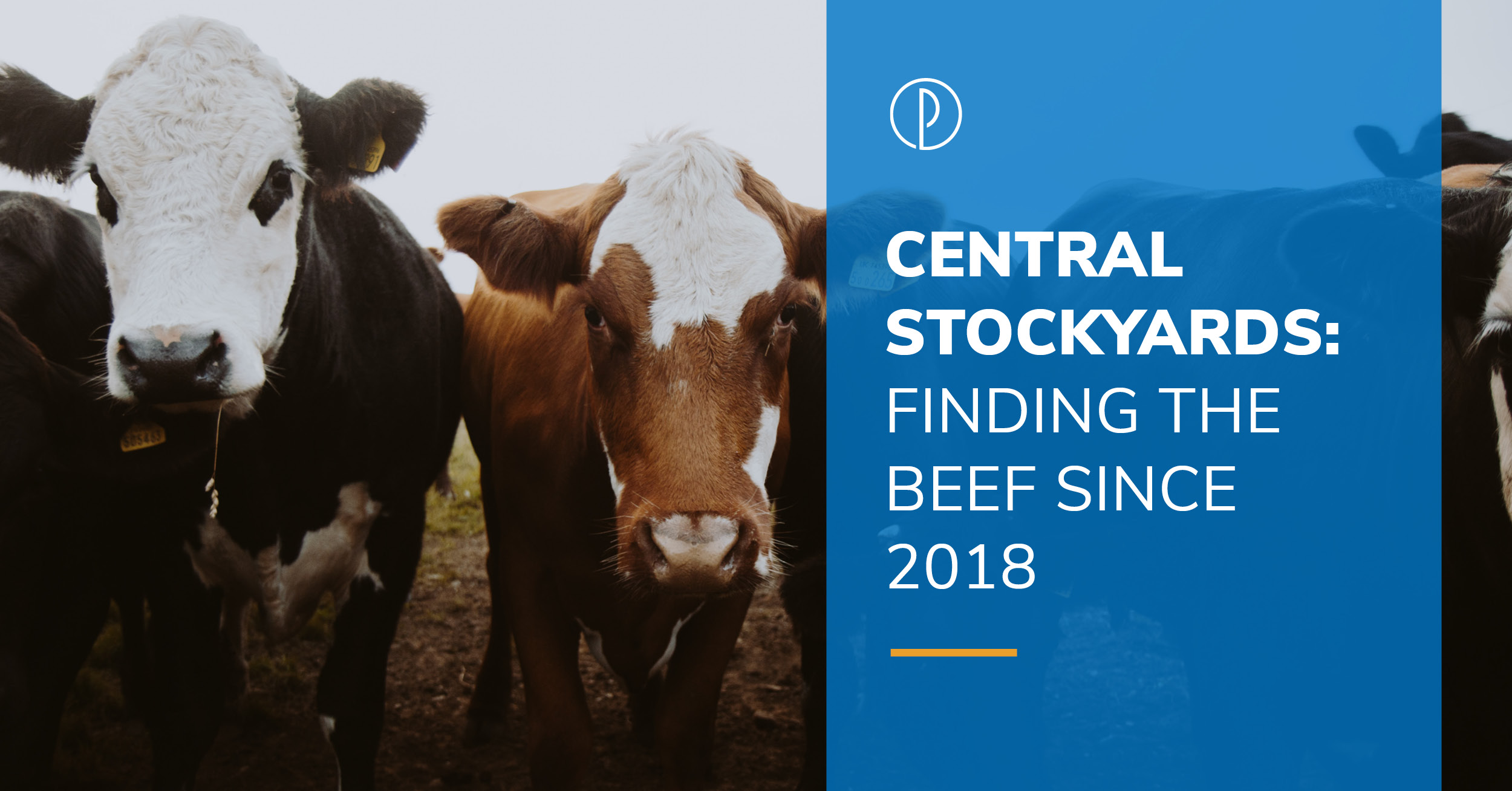
There are few people more perfectly suited for success in the beef industry—and the position of CEO of Central Stockyards—than Forrest Roberts.
Born and raised in South Texas on a family-owned livestock operations and retail meat market, Forrest has dedicated his life to the health of the beef industry, from animal wellness to global food industry leadership.
I’ve had many opportunities to get to know Forrest over the years—we’re both fond of 4am wake-up calls and a chance to solve the day’s problems before the sun is up. We both love merging personal equity with sweat equity to build something bigger than ourselves. And we both appreciate a really (really) good steak.
If you’re curious about the latest advancements in the beef industry—and where your food comes from as a whole, the interview below should both educate and excite you.
Explain what Central Stockyards does to someone who doesn’t know a thing about cattle.
In its simplest sense, a stockyard is the platform that allows cattle producers to find willing buyers for their beef—and, conversely, it allows ready buyers a place to purchase the beef buying experience of their choosing.
In the past, the stockyard was a physical space, with chutes, fences, and pens to showcase and sell animals. Today, Central Stockyards offers the opportunity to operate just as well online, allowing sellers to proudly showcase years of hard work, care, and investment in their herd to discerning buyers all over the country.
What are some of the current challenges facing the US beef industry?
In 2021, cattle production is forecasted to represent about 17 percent of the $391 billion in total cash receipts for agricultural commodities—and an industry this large is not without its headaches. The most critical one can be summed up in one word (and it’s a doozy): oligopsony.
An oligopsony is a market condition that typically happens when numerous suppliers compete to sell their product to a small number of (often large and powerful) buyers. (Not to be confused with an oligopoly, which has the opposite problem).
An example: At any given moment, 700,000 cattle are ready to be transformed into a beef eating experience for millions of ready, hungry Americans—with only a handful of packing plants able to purchase, process, and pack the meat.
Several decades of mergers and acquisitions in the beef industry have created an oligopsony market that now extends from packer thru the food service & retail segments of the beef supply chain. The industry is rife with factors that limit price discovery, transparency, and fair competition.
COVID-19’s supply chain issues brought many of these issues to a head, particularly for the cattle producers—thus accelerating and increasing the market demand for a better way to go to market.
How is Central Stockyards poised to address some of these issues?
The mission of Central Stockyards is to offer transparent price discovery through negotiated trades in real time—while enabling value to be realized by all participants.
We support both the buyer and the seller, and, in doing so, have to be highly transparent—and relentlessly neutral—in everything we do. Since the buyer and seller aren’t in the same room or in the pen with the cattle, our job is to make sure everyone gets what they need to make a smooth transaction.
It’s one of the reasons why we value integrity so highly—our goal is to act in the best interests of both the sellers and the buyers, which ultimately is in the best interest of the industry itself. This is a lot easier when we’re clear, straightforward, accurate, and fair.
Central Stockyards recently purchased the Fed Cattle Exchange. Why was this move important?
Other articles have been written on this (here’s a good one), but the crux of the decision came down to appreciating the potential of the Fed Cattle Exchange. It wasn’t scalable in its current state—it needed better user interface, a dedicated support team, and bigger resources to bring it to life.
Ultimately, we were able to harness and integrate the accumulated learnings to create its critical place within the Central Stockyards platform.
These learnings have established a working model that we’ll use for other product ladders, including a Feeder Cattle Exchange and a Breeding Cattle Exchange, both coming soon.
You’ve often described Central Stockyards as a marketing platform. How is it different from a traditional marketplace?
We often refer to Central Stockyards as a marketing platform, and we mean it in the sense of bringing agricultural commodities “to market” much like it was done 100 years ago. Unlike other marketplaces (social, online, or otherwise), we focus 100% on cattle and the age-old stockyard traditions are still in place.
That said, the beef industry can learn a lot from other market segments. We’re using existing technology in new and innovative ways to continue to make good on our transparent mission.
Traditional stockyards would handle regional cattle that mostly look, perform, and eventually taste the same way—the cows that live in South Dakota are not the same cows that thrive in Texas. The beef industry needs a robust, nationwide tool that can align the needs of both cattle producers and buyers—and one that can facilitate transparent, negotiated trades at the same time.
Much like Zillow allows a buyer to explore a home’s features, benefits, and structure, Central Stockyard gives the buyer an opportunity to explore a herd’s age, diet, composition, and average weights—complete with pictures and live video feeds.
We’re also including a transportation facilitation and tracking component to ensure buyers not only know where their food comes from, but where it’s headed—and every mile in between.
And I’m excited to say this is just the beginning.
For more information about agricultural commodities investing, Central Stockyards, and investments, reach out to me on LinkedIn or send me an email at [email protected].
